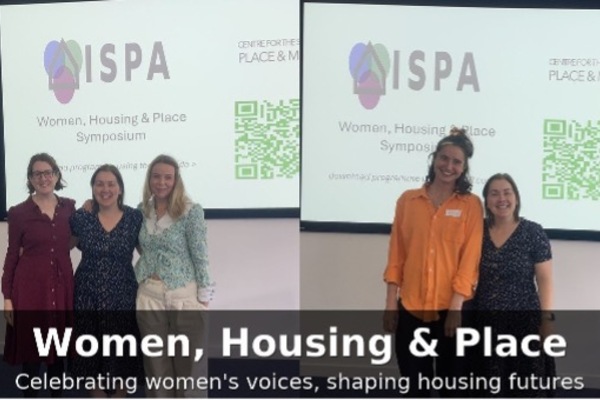On government led social housing initiatives - Why the UK needs a return to the Housing Association Model.
Peter Defoe and Andrew Thompson - Anglia Ruskin University
On government led social housing initiatives - Why the UK needs return to the Housing Association Model.
According to Larry Elliott (2014), in the 1920s Britain was a nation in which almost 80% of people rented their homes, almost all from private landlords. Concern about the poor standards of the housing stock led the prime minister, David Lloyd George, to promise a "land fit for heroes" for the homecoming Tommies. The 1919 Housing Act provided subsidies for local authorities to build council houses.
However, once the risk of revolution had passed, that vision of these future homes was under attack from the private sector house building lobby, Addison sets out in ‘Betrayal of the slums’, how Government removed from Local Authorities the ability to achieve the 1919 Act’s intention. The toxic role of for-profit housing development on the quality of the overall housing market is therefore a well-documented blight on the drive towards quality provision.
By the 1930s Housebuilding peaked at 350,000 a year. Post war saw a council housing programme which peaked under the Conservative Government in the 1950s at around 250,000 and then, the 1960s saw combined private and council housebuilding hit a postwar peak of just over 400,000 a year.
In the early 1970s the majority of social housing was provided by local authorities and by larger authorities such as the LCC followed by the GLC, although organisations such as the Peabody Trust had already accumulated a large stock of properties in London.
There was a general recognition that the ordinary housing stock was deteriorating and that properties could be obtained relatively cheaply and refurbished to provide adequate accommodation for people needing housing and this spawned an industry with a large number of small housing associations springing up.
Initially a limited grant was made available on a property-by-property basis whereby the cost of purchase and refurbishment had to be justified against the accommodation provided. The accommodation had to meet certain space standards but did not, for example, require to be centrally heated or to have double glazing. Above all they had to be free from damp, rising or otherwise and so attention was paid to the basic structure with patch repairs elsewhere.
Each property was tendered, and costs compared against previous schemes with allowance for inflation as it was at that time. Some improvements were identified with minimal cost increases such as the fact that patch repairs to walls were nearly as expensive as plastering the whole wall. Price predictability was fairly reliable at this point.
In the early 1980s there was a requirement to instal central heating in all refurbishments, and we became aware of the need to provide insulation to external walls, for example and so the grant rate was increased and no sooner had this occurred than builders increased their prices. A project where 5 years previously we might have spent £10,000 to £15,000 was now coming in at around £25,000. This was one of the first indications that pumping money in does not necessarily result in increased output.
Various funding models have been tried since then, including allowing housing associations to self-fund through private sales and shared ownership and the merger of Housing Associations to gain efficiency of overhead costs making for large and often remote organisations.
A rapid increase in population started in the late 1990s, together with freely available credit and a sharp fall in the numbers of houses being constructed has led to sharply rising house prices.
Targets for new housing and especially social housing have regularly fallen behind and not all can be blamed on profiteering of developers. In fact, the largest single cause is said to be the lack of skilled labour in the construction industry, followed by the overwhelmed planning system which is unable to respond swiftly to planning applications even where they are deemed uncontroversial.
The alternative model of social housing.
Social housing and the provision of social value in the UK has never been the sole preserve of the function of Government, in fact the history of the UK model has embedded in history a radical alternative vision. The Almshouse movement can trace a history back to 1235 and on a micro scale is still providing a social value to communities. Pannell & Pooley, 2019 set out in the RICS Research Report, ‘Almshouses: a model of community housing for an aging population’, how this alternative model is still a viable micro solution and particularly more ‘’person centred when considered the needs of a growing aging population..
Larger scale housing association models can trace back to John Ruskin providing the funds to Octavia Hill to provide a 5% per annum return to investors but with all other revenue being directed to the social value of improvement to housing conditions. Whilst the Garden City Movement has a separate linage (Ebenezer Howard) the early supporters such as the cooperative movement and Quakers ensured that at the design core was a strong social as well as housing purpose.
Social purpose using housing as a core vehicle can be seen in 2023-34 via Places for People, managing 245,000 homes and delivering 1,750 new homes they have this year generated £334m in social value. The philosophy difference is simple; society needs healthy housing set in a community rather than volume density towers with no soul. Working with Homes England, 7,000 affordable homes will be delivered to the market.
On 13th February 2025 the CEO of Places for People wrote “Today is just one piece of the puzzle and the housing crisis remains deep-rooted and multi-faceted. Plans unveiled here must be followed up with a bold, long-term and integrated approach to tackling the housing, health and social care challenges that continue to plague the UK.”
The historic Government centred housing approach has failed to deliver both healthy homes and a sense of community. When looking forward to a successful vision of delivery both in micro-Almshouse and large-scale Housing Association a non-governmental lead approach has proved more robust at successful long-term delivery.
References
Elliott L. 2014 (https://www.theguardian.com/business/2014/may/24/history-british-housing-decade?CMP=share_btn_url)
Addison C. Betrayal of the Slums 1922 Forgotten Books
Read G. (2025) Places for People response to Government’s announcement on new towns - Places for People
Pannell, J., Pooley, A. and Francis, S.A., 2019. The role of almshouses in the 21st century: a scoping review. Almshouse Association: RICS.https://www.rics.org › dam › documents › research






